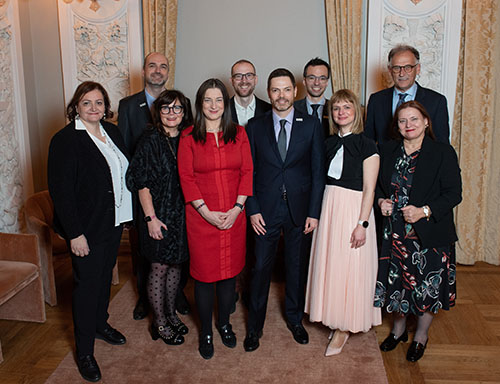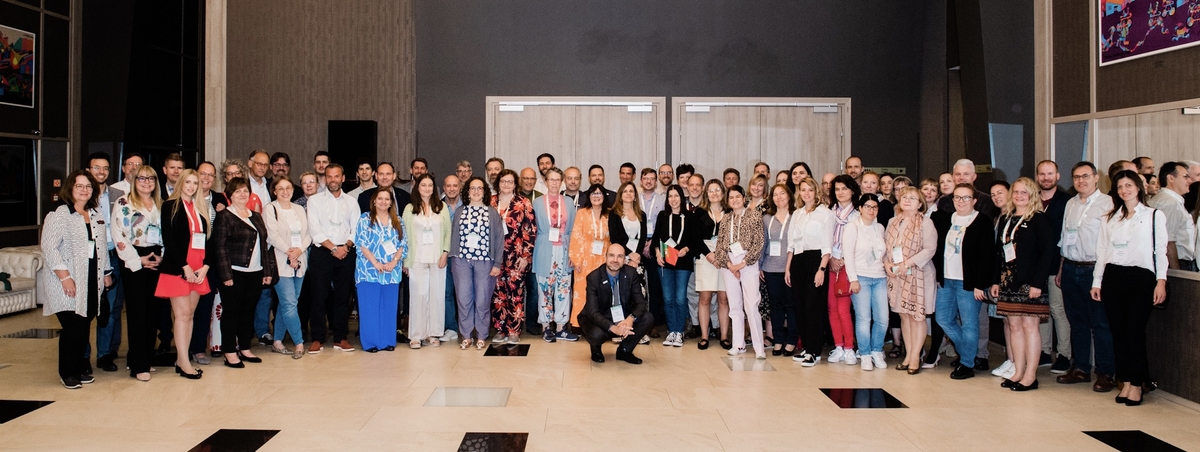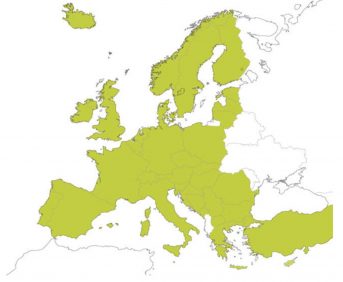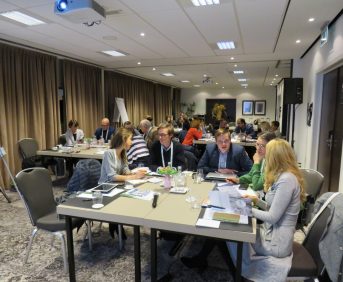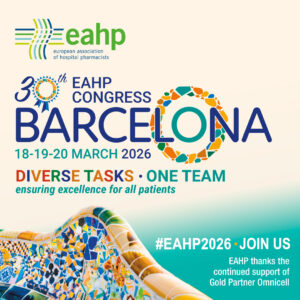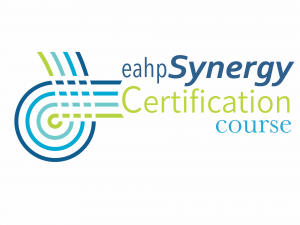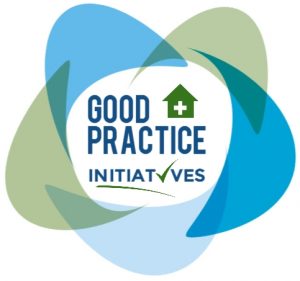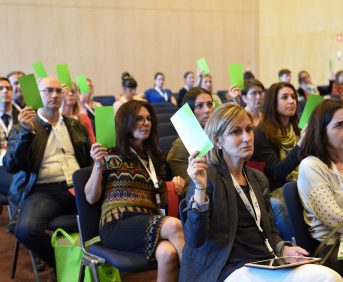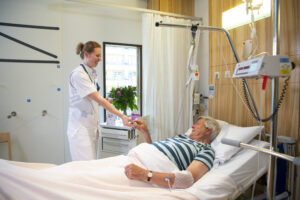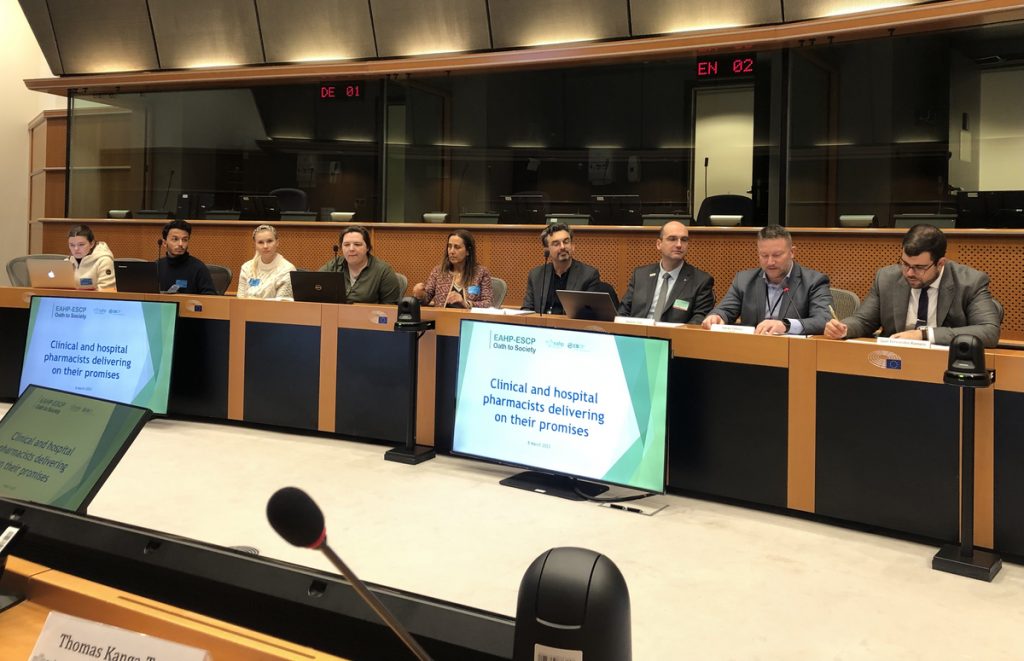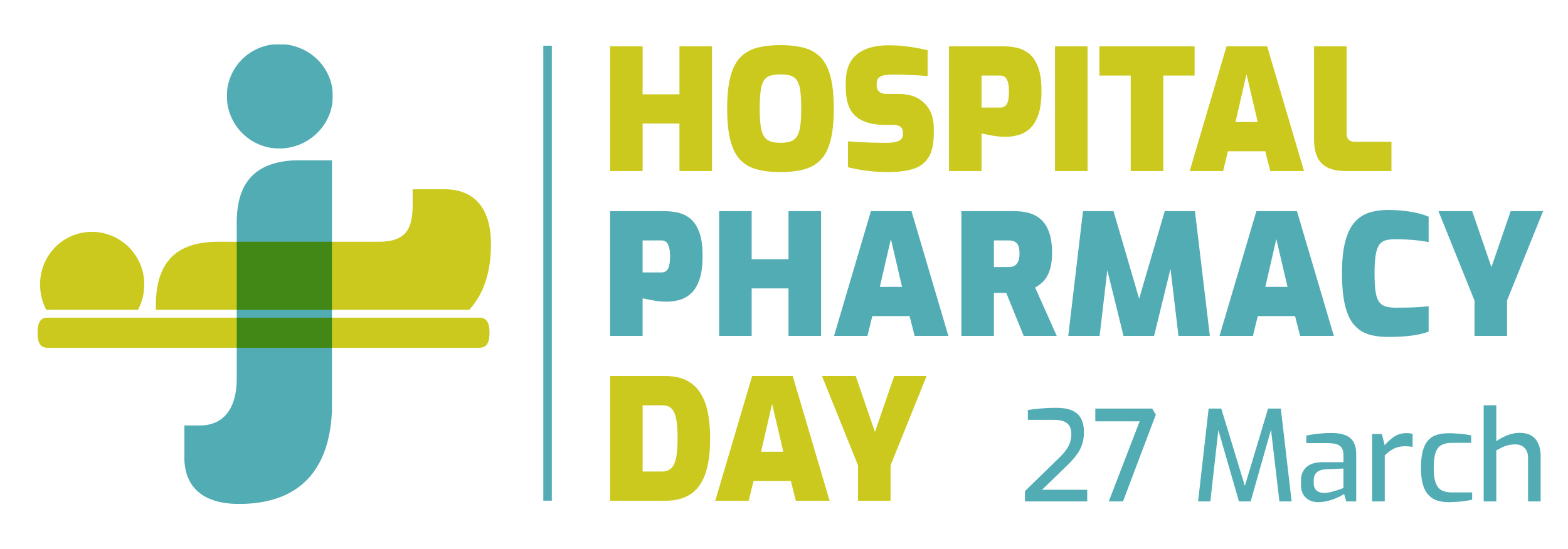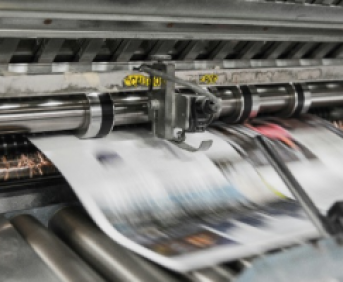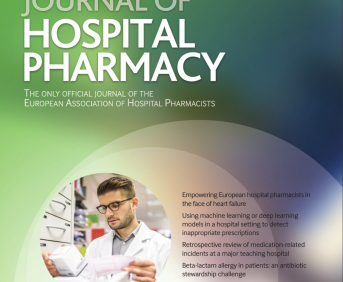Homemade personalized 3D printed guides for mandibular reconstruction – A pharmacist feedback
European Statement
Production and Compounding
Author(s)
Quentin Misandeau, Romain Bosc, Muriel Paul, Valérie Archer, Lionel Tortolano
Why was it done?
The plastic surgery department bought two 3D printers in order to design and create custom-made medical devices. The main objective was to decrease the delay between mandibular cancer diagnosis and the surgery. The delays of production in the medical device manufacturers may exceed 2 weeks. Those delays are considered as a lost of chance for the patients.
What was done?
We helped our surgeons to secured the production procedure and reduce the risks for patients. We create a management quality system for supply, production, sterilization and using of our homemade personalized 3D printed guides.
How was it done?
First, we created a task force of pharmacist and surgeons.
The main work was a risk analysis with the FMECA method for all the steps in the procedure (software, tools, actors and materials).
What has been achieved?
Some correctives actions were taken. The riskier points were the plastic materials toxicity risk, the sterilization procedure that has been validated and the production traceability. A biocompatibility evaluation was performed. A clinical evaluation has been initiated in the same period.
What next?
Since the new medical device regulatory (2017 /745 CE) was published in 2017, the article five, that regulate the 3D printing in hospital, changes the possibilities. In fact, as personalized 3D printed guides are available on the EU market, homemade personalized 3D printed guides for mandibular reconstruction could be not authorized anymore. The only way would be for the hospital to obtain the regulatory statut of manufacturer and comply with the essential requirements.
Expanding hospital pharmacy services by centralizing the preparation of non-cytotoxic intravenous medications: A preliminary overview of the Italian community of APOTECA users
European Statement
Production and Compounding
Author(s)
Alessandro D’Arpino, Fiorenza Enrico, Caterina Donati, Simone Leoni, Giorgia Longobardo, Marco Bellero, Alessandra Bianco, Giuseppe Zacchi, Anna Zaltieri, Stefano Monica, Nicolò Squartini, Matteo Federici
Why was it done?
In most of Italian healthcare organizations, the large majority of non-cytotoxic IV medications are prepared in clinical environment by nursing staff. This is recognized as a complex and labour-intensive process that entails various risks of potential medication errors (microbial contamination, wrong reconstitution/dosing). Centralizing the preparation from the clinical environment to the pharmacy in order to provide ready-to-administer IV medications represents a strategy to improve safety and prevent medication errors.
What was done?
The community of APOTECA technology users is committed to fostering co-de¬sign of technology based on the hospitals’ needs and sharing best practices for improving hospital pharmacy services. During a meeting taken place in September 2021, a panel of hospital pharmacists belonging to APOTECA community laid the groundwork for centralized preparation of non-cytotoxic intravenous (IV) drugs and establishment of Central Intravenous Additive Service (CIVAS) in Italian hospital pharmacies.
How was it done?
The following methodology was adopted to promote a standard profile of centralization: (1) definition of criteria for the selection of drugs suitable for centralized preparation, (2) identification of IV medication classes for which preparation should be centralized due to intrinsic risks and demand, (3) evaluation of potential benefits, (4) discussion on organizational challenges regarding the establishment of CIVAS, (5) assessment of the role of automated preparation with robotics.
What has been achieved?
Five selection criteria to centralize drugs were mentioned: long-term stability data, frequency of use, cost, complexity of preparation, microbial contamination risk. Continuous infusion of antibiotics, vasoactive drugs, anaesthetics, pain medications, intravitreal injections, and patient-individual doses for paediatric patients were chosen as eligible IV medication classes to implement centralized preparation. Major benefits of centralization were pointed out, i.e. proper aseptic preparation, perspective quality controls, process traceability, reduced drug wastage, and releasing nursing time to care. Logistics, inventory management, limited space, and inadequate quality control units were identified as main challenges to the CIVAS establishment. Participants agreed that robotics plays an important role to minimize repetitive manual activities, optimize working efficiency, and increase pharmacy production capacity, thereby streamlining the introduction of CIVAS.
What next?
A close collaboration between healthcare staff and hospital pharmacy will be essential to evaluate the feasibility of centralized preparation as well as its clinical and cost-effectiveness.
DEVELOPMENT OF A PATIENT-CONTROLLED ANALGESIC MIXTURE FOR POSTOPERATIVE PAIN CONTROL
European Statement
Production and Compounding
Author(s)
María Molinero, Virginia Puebla, Cristina González, Lidia Ybáñez, Gonzalo Hernando, Natalia Sánchez-Ocaña, Javier Corazón, María de la Torre, Jose Manuel Martínez
Why was it done?
This technique provides autonomy to the patient allowing to adjust the dose based on the intensity of pain. It has been demonstrated that small on-demand doses of analgesia provide a reduction in the final dose, thus reducing side effects. In addition, by minimizing the possible delay in the administration of analgesia, the anxiety associated with pain and exacerbations is reduced.
What was done?
Hospital Pharmacy Service in collaboration with Acute Pain Unit has developed a protocol for an analgesic mixture for intravenous administration in continuous infusion based on tramadol, dexketoprofen and haloperidol. It is a patient-controlled analgesia (PCA) administered by pump for the treatment of acute postoperative pain.
How was it done?
We performed a bibliographic search of stability studies in order to standardize the analgesic mixture, guaranteeing its physical-chemical and microbiological stability.
What has been achieved?
A mixture of 600mg tramadol, 300mg dexketoprofen and 5mg haloperidol was prepared and it was filtered through a 5-micron filter. It was diluted in 100mL of 0.9% sodium chloride, obtaining a mixture of 125mL. It was sealed and bagged in a photoprotective bag. After the bibliographic search on stability data and physical-chemical compatibility of the mixture, a stability of 14 days at 2-8 ºC was established. Once elaborated, quality control was performed by gravimetry. It was dispensed weekly by stock to the post-anesthesia resuscitation unit. The established perfusion rate is 1.3 mL/h or 1.7 mL/h for 48h. With each rescue, 8mg of tramadol and 4mg of dexketoprofen are released per hour or 4mg and 2mg every 30min, respectively. The maximum dose that can be administered is 400mg tramadol, 150mg dexketoprofen and 2mg haloperidol, except if the patient weighs less than 50kg: 8mg/kg tramadol. If renal insufficiency, dose adjustment was mandatory.
What next?
The centralization of the preparation of intravenous admixtures from the pharmacy service allow us to adjust the expiry date based on stability studies reported in the literature, to maintain the asepsis of the mixture as it is prepared in horizontal laminar flow cabinets, to increase the safety and to secure the traceability.
Added value of centralised compounding of vaccines against SARS-CoV-2 in Hospital Pharmaceutical Services – a quantitative analysis
European Statement
Production and Compounding
Author(s)
Rui Relvas, Rui Pedro Marques, Ana Castro, Sérgio Nobre, João Paulo Lopes da Cruz
Why was it done?
Medicines compounding by the HPS-staff is a primordial activity, and its centralisation allows several benefits in levels such as patient safety, quality, efficiency, and pharmacoeconomics. Despite this recognised importance, it is not always possible to quantify its added value. The fact that vaccines against SARS-CoV-2 are supplied in multi-dose vials and the need to prepare and assure enough doses to vaccinate a broad population presented itself as an excellent opportunity to analyse such indicators.
What was done?
A quantitative analysis of the importance and added value of centralised preparation and compounding of vaccines against SARS-CoV-2 at the Hospital Pharmaceutical Services’ (HPS) Compounding Unit from a Central Hospital in Portugal.
How was it done?
Between 27th December 2020 and 2nd August 2021, 13.030 doses were prepared (96.9% Pfizer/BioNTech; 3.1% AstraZeneca). At the first 3 vaccination sessions, multi-dose vials were diluted at the HPS, and each syringe measured by the nursing-staff previously to the administration.
After these initial sessions, each dose started to be individualised by the HPS-staff on pre-filled, ready-to-use syringes. Each vaccine dose was individualised on a horizontal laminar flow cabinet according to a previously approved operational procedure.
Reception, preparation, and dispensation records were retrospectively analysed. Key performance indicators were quantified.
What has been achieved?
During the first 3 sessions of vaccination, when nursing-staff measured each vaccine volume, a total of 1640 doses were administered. However, it would be possible to measure a total of 1932 doses (84,9%). The daily maximum of people vaccinated was 770.
In the following sessions was possible to prepare 11.390 doses, with a theoretical maximum of 10.892 (104,6%) and a daily maximum of 1.113.
This yield, over 100%, allowed an excess of 498 doses, which translated into the vaccination of 249 extra individuals fully vaccinated with the 2 doses. Factors like needle and syringe selection and preparation beyond an aseptic and validated environment contributed for the yield increase.
What next?
Series-production of compounded medicines in a sterile, validated, and controlled environment allows important benefits and this analysis shows the potentiation of every key performance indicator considered. These data should be considered for the future planning of population-wide activities involving the massive preparation of sterile medicines.
Critical points in the management of intratumoral treatments in oncology clinical trials
European Statement
Clinical Pharmacy Services
Author(s)
Lorena Garcia Basas, Pablo Latorre Garcia, Eugenia Serramontmany Morante, Patricia Garcia Ortega, Pilar Rovira Torres, Laura Maños Pujol, Isabel Cidoncha Muñoz, Maria Queralt Gorgas Torner
Why was it done?
Increasing number of CT with IT, in different pathologies, with different tumor locations, contributes an increase in the complexity of drug compounding and procedures. Their preparation, administration and handling requirements differ from current therapies.
What was done?
Identification of critical points concerning intratumoral treatments (IT) preparation in patients with cancer included in clinical trials (CT).
How was it done?
Ongoing CT with IT in our unit were reviewed to identify critical points regarding prescription and preparation process. 14 trials with IT, 8 (57%) of which have ongoing patients were identified. Two of these trials are “first in human”. The critical points were:
- Nature of the IT: virus (4, 29%), nanoparticles (3, 21%), ribonucleic acid (2, 14%), cyclic dinucleotides (2, 14%), monosaccharides (1, 7%), phospholipids (1, 7%) and proteins (1,7%).Particularly, virus have special safety measures and transport conditions
- Dosing units: mcg (4, 29%), plaque-forming unit/mL (PFU/mL)(3, 21%), mL (3, 21%), mg (2 14%), ng (1, 7%), 50% Tissue Culture Infectious Dose (TCID50)(1, 7%).
- Prior dilution before filling the syringe: 8 (57%) of our preparations require at least one prior dilution.
- Drug volume to prepare according to the tumor size: 8 (57%) IT preparations depend on the tumor size.
- Depending on the depth of the target tumor lesion (visceral or superficial), different size of needle is required. This is important because different priming volumes of the needles are necessary.
What has been achieved?
The whole information necessary for a complete prescription, validation and correct preparation goes further than information usually needed for current therapies such as chemotherapy. The results of the study of the critical points allow us to elaborate the standardized operational procedures (SOP) for each CT and IT. These SOPs include the necessary information for a correct preparation for each IT, reducing risk of mistakes and achieving uniformity in the process.
What next?
These types of therapies represent a challenge, and pharmacists have an important role in developing new procedures. Communication between radiology, oncology and pharmacy departments in a multidisciplinary teamwork is essential. This information may be useful to other centers due to the lack of experience and SOPs to work with this type of therapy.
COMPOUNDING AUTOMATION OF NON-STERILE EMULSIONS
European Statement
Production and Compounding
Author(s)
Lidia Ybañez, Virginia Puebla , Cristina Gonzalez, María Molinero, Estefanía Rosón, Gonzalo Hernando, Natalia Sanchez-Ocaña, María De la Torre, Javier Corazón, Jose Manuel Martinez-Sesmero
Why was it done?
In 2020, Compounding laboratory’s activity increased as a result of COVID-19 pandemic. In order to achieve new needs and requirements, we decided to introduce a mixing and emulsifying robot. Improvement in productivity would also allow us to elaborate formulas that were previously outsourced (such as selective digestive decontamination (SDD) solution and oropharyngeal paste), thus saving money. The effectiveness of this measures was evaluated from April 2020 to April 2021.
What was done?
An emulsifying-mixing device for non-sterile oral and topical formulation was introduced at the pharmacy’s compounding laboratory. A reorganization of laboratory workflows was implemented to ensure an optimal use of the device.
How was it done?
We performed a needs assesments plan to determine what needs to be accomplished to reach our project goals (Good Manufacturing Practices (GMP) compliant. Formulas suitable to be compounded in the robot were selected. A reorganization of the daily practice was performed to achieve an optimal workflow.
What has been achieved?
Seven product formulations and 3 excipient formulations were suitable for being produced by robot (SDD solution and oropharyngeal paste being two of them, (11536 single dose packages of SDD solution and 5977 of oropharyngeal paste have been prepared throughout the year ).
37202€ have been saved by producing the SDD solution and paste instead of outsourcing its production. The investment required to purchase and operate the robot was approximately 2600 euros.
What next?
Compounding automation improves efficiency and productivity (as we have been able to produce formulas that were previously outsourced), saving costs. Robot has been successfully incorporated into daily practice in a Hospital Pharmacy compounding laboratory. Its implementation has allowed the optimization of available resources (especially during the pandemic) and significant financial savings for the Hospital.
By implementing this device, other hospitals will be able to improve their production processes for non-sterile medicines in compliance with GMP.
COVID-19 VACCINATION PLAN BY THE PHARMACY DEPARTMENT IN A SPANISH HOSPITAL
Pdf

European Statement
Selection, Procurement and Distribution
Author(s)
BERTA MONTERO-PASTOR, ELSA IZQUIERDO-GARCÍA, LORENA DE AGUSTÍN SIERRA, ISMAEL ESCOBAR RODRIGUEZ
Why was it done?
The unprecedented mass COVID-19 vaccination has highlighted the need to develop strategies that prioritize and optimize the use of resources. Strategies have been established at the national and community levels, however, each center must implement its own plan according to needs and capabilities for its target population.
What was done?
A Pharmacy Department (PD) vaccination plan including strategies to optimize human and material resources available to deal with mass COVID-19 vaccination.
How was it done?
In plan development, we considered the type of vaccines, storage requirements, the need for specific equipment and workflows, limited vaccine vial supply, and aspects related to staff in the PD.
A standard operating procedure (SOP) was developed for logistic management of vaccine orders, including an SOP for nursing staff if the shipment arrived outside the PD schedule.
For storage, specific space was provided considering the different storage requirements.
The doses corresponding to the vaccination of health professionals and patients from group 7 of the national vaccination strategy (onco-hematologic patients with active treatment, hemodialysis patients, primary immunodeficiencies, HIV -CD4<200cel/ml, Down Syndrome ≥40 years) were prepared centrally in the PD. For the general population, a centralized preparation in PD is not feasible. So, alternatively, PD developed a dispensing circuit and informative material for nursing staff for the correct dosage and traceability of vial batches.
In all stages, the use of vials was optimized with strategies such as the selection of adequate packaging material, the grouping of patients, or the exchange of vials between vaccination centers.
What has been achieved?
We received 16230 vaccine vials from four different commercial brands. There have been no incidents related to the receipt and storage of vaccines.
A total of 9753 doses were made. In the whole elaboration process, we only wasted a vial on one occasion and a dose on another.
We dispensed 11911 vaccine vials to the general population. Of these, 13 vials were discarded due to errors in the preparation.
What next?
The development of a specific plan has made it possible to optimize the COVID-19 vaccination process in our hospital. The plan will be adapted and updated according to the updates of the national and community vaccination strategies.
Renewal in pharmaceutical compounding sterile preparations circuit in Pharmacy Service
European Statement
Production and Compounding
Author(s)
PILAR RANZ ORTEGA, MARÍA ARRIETA LOITEGUI, DANIEL GONZALEZ ANDRES, ANA MARÍA AGUI CALLEJAS, MARIA TERESA POZAS DEL RIO
Why was it done?
– Optimize the workflow:Nursing staff are independent in final product quality control.Dissapear the manual register of compounding sterile preparations.Fewer mixtures are discarded.Also in Pharmacy Service only elaborate the sterile preparations with an economic and safety impact.
– Improve the safety of drug administration in pediatric patients: there are ready-to-use commercial parenteral presentations, which can lead to errors when dosing per kilo,fe: enoxaparin…
– Optimize economic savings:all excess vials are reused
What was done?
Previously,some parenteral drugs were compounded at Pharmacy Service.The rest of the vials were discarded daily,so the pharmacist had to anticipated some elaborations not to throw,so then some were suspended.
Also, the pharmacists done the final product quality control,it could be delayed the dispensing and specially when it´s necessary to repeat the mixture.
The changes were:
– Re-selection of the parenteral drugs compounded at Pharmacy Service by:
• Economic criterio:the cost of drug has to be >20 euros/vial
• Safety for the pediatric patient:redose individually parenteral drugs “readytouse”
– Review the storage conditions:physicochemical (technical data sheet drug,Stabilis web) and microbiological stability (Good practices for preparation drugs in hospital pharmacy services publised by Spain Goverment) of all parenteral drugs previously selected.Although the physicochemical stability is higher,the final stability will be limited by the microbiological stability and the risk level microbial contamination(USP 2004).
– Standard Operating Procedures with structured and updated information
– Reuse of partially used multi dose vials:we reviewed the physicochemical and microbiological stability of open vial
– Final product quality control by nursing staff
– Save time to pharmacist:daily scheduling instead of anticipated elaboration of sterile preparations
How was it done?
– A nurse involved in the circuit change giving her feedback on the changes
– Traceability of the rests of the vials:stickers are affixed to the opened vials indicating the reconstitution data and the expiration date
– Final product quality control should be done by a diferente nurse to elaborated to detect potencial errors
What has been achieved?
The total cost savings for this year is 295.778€. After the circuit´s change, the savings have increased by 55% for liposomal amphotericin b, 51% defibrotide, 24% micafungin.
What next?
Compounding sterile preparations individualized in Pharmacy Service to patients hospitalized at home, transplanted of hematopoietic progenitors and immunocompromised
New frontiers of hospital pharmacy: management and preparation of human tissues used in the surgery room
European Statement
Clinical Pharmacy Services
Author(s)
Andrea Ossato, Giuseppe Giovagnoni, Michele Giannini, Anna Francesca Spada, Francesca Realdon, Valeria Mezzadrelli, Lorenza Cipriano, Nicola Realdon, Teresa Zuppini, Roberto Tessari
Why was it done?
Since 1st October 2019, the regional tissue bank that supplies hospital, stopped sending ready-made tissue to the implant, preferring the shipment of tissues frozen at -80°C. For this reason, the hospital pharmacy developed a procedure for the management of orthopedic allografts ensuring a clear and safe supply chain reducing the waste raised from the obligation of immediate use of the thawed tissue.
What was done?
Hospital pharmacists, in agreement with the hospital administrators and the orthopedic surgery department, developed a new service characterized by procurement, processing, preservation, storage, thawing and preparation of human tissues and cells for orthopedic allografts, according to European and national legislation.
How was it done?
The management of orthopedic allografts took place as follows: was established a dedicated path for communications with orthopedic surgery and bank tissue; tissue thawing and washing was centralized in the clean-room of the hospital pharmacy and were guarantee adequate training of all personnel involved as well as complete standard operating procedure documentation for all stages of the process and appropriate control measures.
What has been achieved?
Evaluation of the process showed that it was favourable in terms of practicality, safety, traceability and cost saving. Especially, the centralization of tissue preparation within clean‐rooms with aseptic technique, allows microbiologically safer setups reducing clinical risk. A further guarantee of safety is given by the sterility process’s validation through Media Fill test. This organisation allowed us to reduce the waste through a more effectively management of the tissues shelf life and any missed surgery with a cost saving and an ethical behaviour.
What next?
Optimise patient outcomes through working collaboratively within multidisciplinary teams and using the limited health systems resources responsibly, are two main goals expressed by the last European Statements of Hospital Pharmacy (ESHP). This study demonstrated how the centralization of tissues management in the hospital pharmacy make the process more efficient and safer and thus comply with the ESHP’s goals; leading to a clinical advantage for patients and better economic impact for the hospital.
A new vancomycin formulation for oral use
European Statement
Production and Compounding
Author(s)
Mette Lethan, Tove Hansen, Trine Schnor, Louise Rasmussen Duckert
Why was it done?
Oral vancomycin 125 mg four times a day for 10 days, is the common treatment for antibiotic-associated clostridium difficile colitis. As solid oral formulations are unsuitable due to strong diarrhea, an i.v. formulation in a diluted form (10 mg/ml) is used. However, several issues with that use, required the need for creating a new formulation.
The product is used for treatment of kids and adults, often with nausea. The low strength requires large volumes of solution and with no flavoring the liquid is very bitter.
Furthermore, the current solution has a limited stability causing difficulties as it is often desired to treat the patients at home. Therefore, a wish arose for a new formulation with a higher concentration, better stability and improved organoleptic qualities.
What was done?
A new oral formulation of Vancomycin was developed to improve the treatment of antibiotic-associated clostridium difficile colitis. The new formulation consists of the active ingredient (API) Vancomycin as a powder with a solvency for dissolving prior to use.
How was it done?
To obtain the best stability it was selected to make a new formulation consisting of a premeasured API, with a solvency ready to mix before use, to obtain a final strength of 50 mg/ml and a volume equivalent to 48 hours of doses.
Vancomycin in pharmacopeia quality was acquired and analyzed. A solvency was formulated mostly consisting of water, conservation and orange flavoring. A test was conducted with a weighed-out API to ensure that it was dissolvable with the solvency in the selected packaging.
What has been achieved?
A product achieving the wanted changes was tested and made. Making a formulation consisting of a premeasured powder creates the possibility of a higher durability. When mixed with the flavored solvency, the wanted strength is achieved.
The new formulation can be stored at room temperature before dissolving. It can be dissolved by the patient before use and kept refrigerated until the full volume is used. The product is easy for the patient to handle and therefore enables treatment in the patients own home.
What next?
A new product was made. Final use by patients will be tested for ease of use and potential home treatment.
